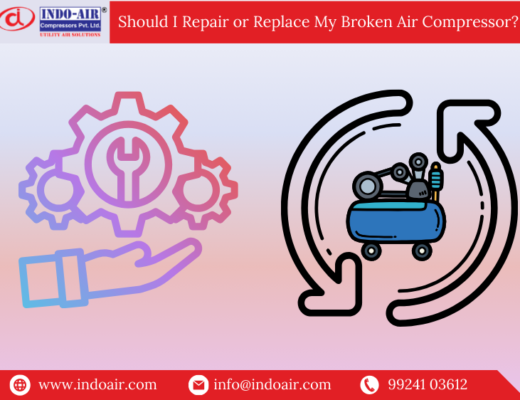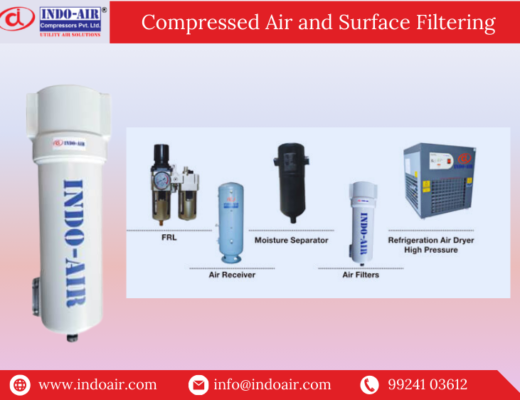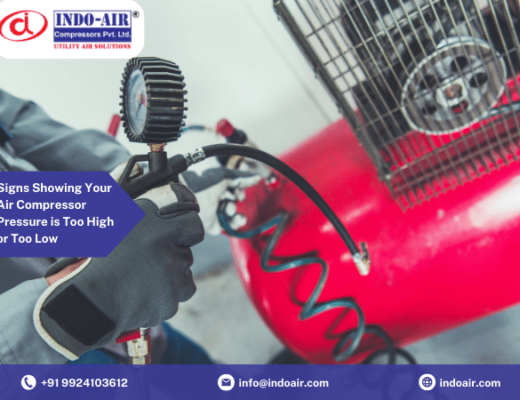A Reciprocating air compressor compresses the air around it by converting electrical energy into mechanical energy. The most typical applications for reciprocating compressors are tyre inflation and pneumatic tools. The piston and cylinder assembly, also known as the piston and shaft, is what distributes pressure from the crankcase to the top of the piston in the compressor. The engine turns the crankshaft in the compressor.
The reciprocation principle, which refers to moving something back and forth, underlies how a reciprocating air compressor functions. Positive displacement machines, sometimes referred to as piston compressors, are what elevate air pressure in order to compress it. Understanding reciprocating compressor design and the many types of compressors available is essential to choosing the optimal model for your application, regardless of how you operate or where you work.
Applications of Reciprocating Air Compressors
Applications for reciprocating air compressors include manufacturing, transportation, consumer products, construction and maintenance, and many more. A certain amount of labour is necessary for a reciprocating compressor to operate. The quantity of labour necessary is determined by a number of elements, such as the engine’s power needs, installation costs, noise levels, and maintenance requirements. As long as all other aspects are taken into account, reciprocating compressors can function well at a variety of load levels.
Types of Reciprocating compressors
There are two different kinds of compressors: rotary screw and reciprocating. Compared to rotary screw compressors, reciprocating compressors require more maintenance and generate more noise. They consume less gasoline because their crankshaft, which is more complicated than the rotating screws on a rotary compressor, drives them. There are two types of reciprocating compressors: single-stage and two-stage compressors. Reciprocal air compressors with a single stage cost less than those with two stages.
Single Stage Compressors
Two pistons, one within the other, and moving on a single crankshaft make up a single stage reciprocating air compressor. An internal combustion engine or an electric motor drives the smaller piston, which is referred to as the driving piston. A connecting rod joins the smaller piston, known as the driving piston, to the bigger piston, known as the collector piston. Air in the cylinder is compressed by the driving piston and forced into a system of pipes that transports compressed air throughout the building. The collection piston can move forward during compression and backward during decompression since it is attached to the stationary base by an adjustable support system.
Two-stage compressors
In a two-stage reciprocating air compressor, the air is compressed and expanded in separate cylinders, each of which is driven by a different engine or electric motor. Each cylinder of the two-stage compressor houses one of the four pistons. In order to lower noise and vibration levels, two-stage compressors run at greater revolutions per minute (rpm) than single-stage compressors. Due to their ability to sustain low pressures during expansion, two-stage compressors provide air of a higher quality and are more effective.
Advantages of a Reciprocating compressor
When it comes to the advantages and benefits of reciprocating air compressors, they have huge advantages as compared to other types of air compressors in the market. Although, every type of compressor has their own advantage and they are deployed in the industries based on that. Some of the advantages are given below.
- Designed for continuous duty
- Deep finned cast iron cylinder
- Low expansion aluminium alloy piston
- Forged steel crankshaft
- Sturdy, robust cast iron crankcase
- Optimal operating speed
- Aluminium cooler tubes and aerodynamically designed fan for efficient cooling
- Air receiver, conforming to ASME design
- Pressure relief valve for extra safety
- Automatic start and stop loop control




